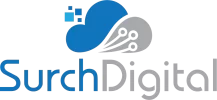
In today’s competitive digital landscape, your website is only as effective as its ability to convert visitors into leads or customers. That’s where landing pages come in. A high-converting landing page is designed specifically to drive a single action, whether it’s booking a consultation, signing up for a newsletter, or purchasing a product.
For service-based businesses, local businesses, or e-commerce companies, mastering landing page design and strategy is critical. In this guide, we’ll cover everything you need to know about creating high-converting landing pages, including design principles, copywriting tips, user experience best practices, and measurement strategies.
What Is a Landing Page?
A landing page is a standalone web page created with a specific goal in mind. Unlike a homepage or other pages that serve multiple purposes, a landing page is focused on a single conversion objective.
Key characteristics of a landing page:
- Clear, concise headline that communicates the offer or benefit
- Minimal navigation to keep the user focused
- A prominent call-to-action (CTA)
- Compelling copy and visuals that highlight value
- Trust signals such as testimonials, reviews, or guarantees
The primary goal of a landing page is to reduce friction and guide visitors toward taking a specific action.
Why High-Converting Landing Pages Matter
Even if your business drives traffic through SEO, social media, or paid ads, low-converting landing pages can waste marketing spend. High-converting pages are essential because they:
- Maximize ROI from paid campaigns
- Capture leads for future marketing efforts
- Build trust and credibility with potential clients
- Streamline the sales process
In short, every visitor counts, and a well-optimized landing page ensures more of them take the desired action.
1. Start with a Clear Goal
Before designing or writing a landing page, define its specific objective. Common goals include:
- Generating leads via a contact form or consultation booking
- Promoting a special offer, discount, or promotion
- Encouraging downloads of a resource, such as an eBook or guide
- Driving sign-ups for newsletters or email lists
A clearly defined goal ensures every element of the page—from headline to CTA—is aligned with the desired outcome.
2. Craft a Compelling Headline
Your headline is the first thing visitors see, and it can make or break the conversion. An effective headline:
- Clearly communicates the main benefit
- Captures attention immediately
- Includes keywords relevant to your offer
- Is concise and easy to understand
For example, a med spa landing page might read:
“Rejuvenate Your Skin with Expert Botox and Facial Treatments—Book Today!”
This headline immediately conveys the service, the benefit, and a call to action in a single line.
3. Use Persuasive and Benefit-Focused Copy
The copy on your landing page should focus on benefits, not just features. Explain how your service or product solves a problem or improves the visitor’s life.
Tips for high-converting copy:
- Speak directly to the visitor using “you” and “your”
- Highlight the pain points and solutions your service offers
- Keep paragraphs short and scannable
- Use bullet points to emphasize key benefits
- Include keywords naturally for SEO
Example for a roofing company:
“Protect your home from costly water damage with our fast, reliable roof replacement services. Our certified team ensures quality workmanship and a stress-free experience from start to finish.”
4. Include Strong Calls-to-Action (CTAs)
Every landing page needs a clear and compelling CTA that tells visitors exactly what to do. Common CTAs include:
- “Book Your Free Consultation”
- “Get Your Instant Quote”
- “Download the Free Guide”
- “Sign Up Today”
Tips for effective CTAs:
- Make them visually distinct using buttons or contrasting colors
- Place CTAs above the fold and at the end of the page
- Use action-oriented language that conveys urgency or value
Remember, your CTA is the gateway to conversion—don’t make visitors guess what to do next.
5. Use High-Quality Visuals
Visual elements like images, videos, and graphics can increase engagement and conversions. For service-based businesses, visuals provide social proof and clarity:
- Before-and-after images for med spas or dental practices
- Photos of completed projects for contractors or landscaping companies
- Short explainer videos demonstrating your service or product
Ensure visuals are high-quality, relevant, and optimized for fast loading. Poor-quality or slow-loading images can decrease trust and increase bounce rates.
6. Add Trust Signals
Visitors are more likely to convert if they trust your business. Include trust-building elements such as:
- Testimonials and reviews from satisfied clients
- Industry certifications, awards, or accreditations
- Money-back guarantees or risk-free offers
- Media mentions or client logos
For example, a law firm could highlight:
“Rated 5 stars by over 200 clients on Google Reviews”
This reassures visitors that your services are credible and reliable.
7. Optimize for Mobile
With more than half of web traffic coming from mobile devices, a landing page that isn’t mobile-friendly can significantly hurt conversions. Ensure:
- Buttons and forms are easily clickable
- Content is readable without zooming
- Images and videos scale correctly on smaller screens
Mobile optimization is also critical for SEO, as Google prioritizes mobile-friendly pages in search rankings.
8. Simplify Forms
Forms are often the most important element on a lead-generation landing page. However, long or complex forms can deter conversions. Tips to optimize forms:
- Only ask for essential information (name, email, phone number)
- Use inline validation to guide users through errors
- Consider multi-step forms for longer inquiries
- Include a privacy statement to reassure users their data is safe
Remember, the shorter and simpler the form, the higher the likelihood of completion.
9. Test and Optimize Continuously
Even after launching a landing page, your work isn’t done. High-converting pages require continuous testing and optimization. Techniques include:
- A/B testing headlines, CTAs, and images
- Testing different form lengths and placements
- Experimenting with color schemes and button designs
- Monitoring user behavior with heatmaps and analytics
Regular testing helps identify what resonates with your audience and increases your conversion rate over time.
10. Track Metrics for Success
To determine if your landing page is performing, monitor key metrics:
- Conversion rate – Percentage of visitors completing the desired action
- Bounce rate – How many visitors leave without engaging
- Time on page – How long visitors stay on your landing page
- Source of traffic – Which channels drive the most conversions
- Form completion rate – How many visitors submit your lead form
Tracking these metrics allows you to refine your landing page and marketing strategies for better results.
Examples of High-Converting Landing Pages
- Med Spa Landing Page
- Headline: “Restore Your Glow with Expert Skincare Treatments”
- CTA: “Book Your Free Consultation Today”
- Visuals: Before-and-after images, staff photos
- Trust signals: Google Reviews, certifications, and awards
- Roofing Company Landing Page
- Headline: “Fast, Reliable Roof Replacement in Your Area”
- CTA: “Get Your Free Estimate”
- Visuals: Completed project photos, short video of the team
- Trust signals: 5-star reviews, warranties, and industry certifications
- Law Firm Landing Page
- Headline: “Experienced Legal Representation When You Need It Most”
- CTA: “Schedule Your Free Case Review”
- Visuals: Attorney headshots, client testimonials
- Trust signals: Media mentions, bar association affiliations
Conclusion
Creating high-converting landing pages is essential for businesses looking to turn website visitors into leads and customers. By focusing on clear goals, compelling copy, strong CTAs, trust signals, mobile optimization, and continuous testing, you can maximize the effectiveness of every landing page.
Remember, the best landing pages are user-focused, visually appealing, and optimized for both search engines and human visitors. For service-based businesses, local businesses, and e-commerce companies, mastering landing page creation can significantly increase lead generation, boost revenue, and improve marketing ROI.
In 2025, businesses that invest time and resources into creating high-converting landing pages will have a competitive advantage, attracting more clients, retaining loyal customers, and growing sustainably in the digital marketplace.




